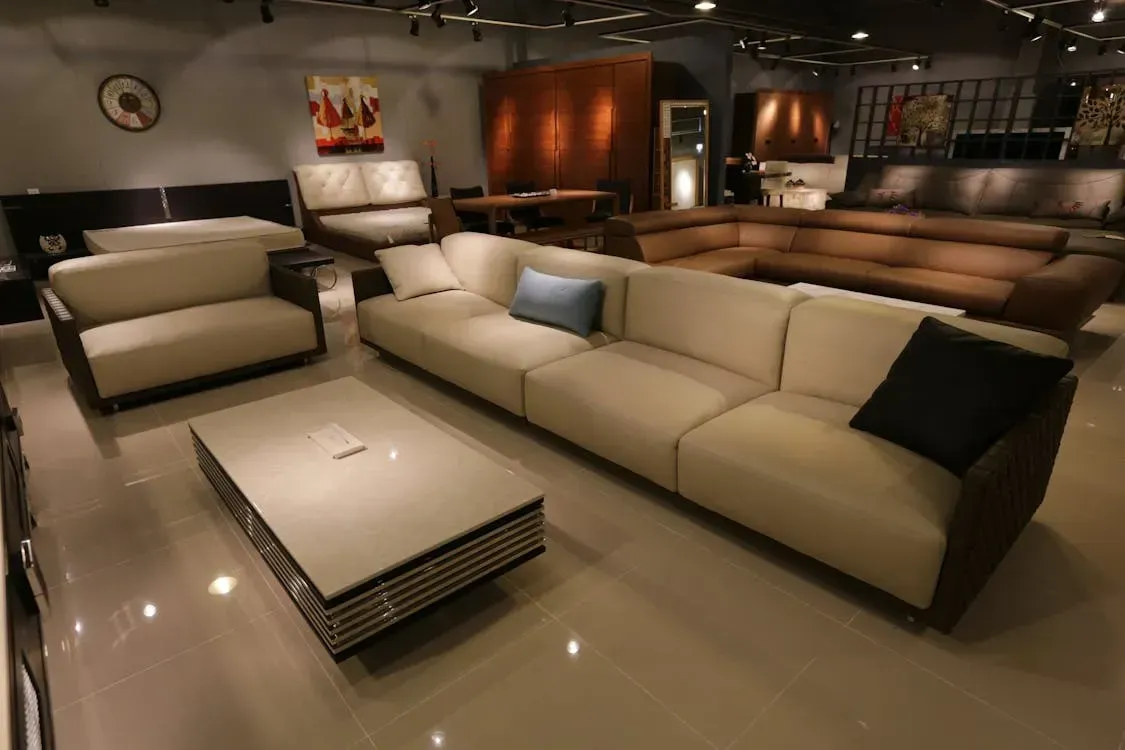How to Choose the Right Multi-Room Audio System for Your Needs

Welcome to the ultimate guide on selecting the perfect multi-room audio system that suits your lifestyle and your home. Whether you're looking to fill every corner of your house with your favorite tunes or want a seamless sound experience as you move from room to room, choosing the right system is crucial.
This blog will cover everything from the basics of multi-room audio technology to the specific features you should consider. We aim to provide clear, expert advice to help you make an informed decision.
Choosing a multi-room audio system isn't just about blasting music; it's about enhancing the way you live and enjoy your home. So, let's dive into the essentials of multi-room audio systems and outline the factors you need to consider before making a purchase.
Understanding Multi-Room Audio Systems
What is a Multi-Room Audio System?
A multi-room audio system allows you to play music in multiple areas of your home, controlled from one central point. Whether through wired or wireless connections, these systems enable you to enjoy music seamlessly as you move from room to room.
Wired vs. Wireless Systems
- Wired: These systems connect speakers through physical cables. Installation is more permanent and typically offers a stable and high-quality sound. However, it requires more upfront work and may not be suitable for all homes.
- Wireless: More popular due to their ease of setup and flexibility, wireless systems use Wi-Fi, Bluetooth, or other technologies to link your audio devices. They allow easy expansion and adjustment, though they may sometimes suffer from interference or loss of quality if not correctly configured.
Trends in Audio Technology
As of 2024, the trend in multi-room audio systems leans heavily towards smart integration. Systems can now connect with various smart home devices, allowing users to control settings through voice commands or mobile apps. High-resolution audio is becoming standard, with more systems supporting lossless formats for crystal-clear sound.
Understanding these basics is the first step in choosing a system that fits your needs, ensuring you get both functionality and quality.
Assessing Your Needs
Evaluating Your Space
Before diving into the myriad of multi-room audio systems available, take a moment to consider the unique characteristics of your space. How large is your home? Do you have open spaces that flow into each other, or is each room distinctly separated? The size and layout of your home will significantly influence the type of system that best fits your needs.
Room Acoustics
The acoustics of a room can dramatically affect sound quality. High ceilings can make sound echo, while carpets might dampen it. Understanding the acoustics of your space can help you choose a system that compensates for these factors, ensuring optimal audio performance throughout your home.
Personal Usage
Think about how you plan to use your system. Are you a casual listener who enjoys background music, or are you an audiophile seeking a high-fidelity listening experience? Maybe you need a system that can easily handle a house party's playlist or a simple setup that allows for soothing melodies in a home office. Your usage will dictate features such as power output, sound quality, and control flexibility.
Key Features to Consider
Audio Quality
High-quality sound is non-negotiable. Look for systems that support high-resolution audio formats—these ensure that the music is as crisp and clear as the artist intended. Pay attention to specifications like frequency range and signal-to-noise ratio, which can make a big difference in sound clarity and detail.
Connectivity Options
A good multi-room audio system offers a variety of connectivity options. Wi-Fi and Bluetooth are standard, but also consider systems that include support for AirPlay, Chromecast, and even direct internet streaming capabilities. This flexibility allows you to effortlessly stream from almost any device or service, enhancing user convenience.
Compatibility
Ensure the system you choose works seamlessly with your existing devices. If you're invested in a smart home ecosystem (like Google Home, Amazon Alexa, or Apple HomeKit), your audio system should integrate smoothly, allowing for voice controls and automated routines.
Ease of Use
User-friendly controls are crucial. Whether it’s a dedicated remote, a mobile app, or voice commands, navigating through your audio settings should be intuitive and straightforward. The last thing you want is a system that’s a hassle to operate.
Expandability
Future-proofing is key. Consider whether you can easily add more speakers or zones later. As your needs grow or change, your system should adapt, allowing you to add to your setup without replacing the entire system.
Choosing the Right Brand and Model
Researching Top Brands
When selecting a multi-room audio system, it’s essential to consider the reputation and reliability of the brand. Brands like Sonos, Bose, and Yamaha are well-known for their quality and durability in the audio equipment industry. Each offers unique features, such as Sonos with its user-friendly interface and Bose for its superior noise-cancellation technology.
Comparative Analysis of Popular Models
To make an informed decision, compare the features of several models. Look at the Sonos One, Bose SoundTouch, and Yamaha MusicCast systems. Consider their connectivity options, audio quality, supported services, and whether they integrate with your smart home devices.
Installation Tips
DIY Installation
For those who prefer a hands-on approach, installing a multi-room audio system can be a rewarding DIY project. Start by planning where each speaker will go and consider the layout of your home’s electrical system and Wi-Fi coverage. Ensure each speaker is optimally placed for sound distribution and minimal interference. Most wireless systems come with user-friendly instructions and can be set up through a mobile app, making the process straightforward.
Professional Installation
If DIY isn't your style, or if you choose a wired system that requires more complex installation, hiring a professional might be the way to go. Professionals can manage the wiring and setup without disrupting your home decor. They can also optimize speaker placement for the best sound quality and system performance.
Optimizing Audio Performance
Once your system is installed, take the time to adjust the settings. Many systems allow you to customize EQ levels and integrate room correction software that adjusts the output to match the acoustics of each room. Experiment with different settings to find what sounds best in each area of your home.
Maintenance and Troubleshooting
Basic Maintenance Tips
To ensure your multi-room audio system remains in top condition, regular maintenance is key. Dust your speakers and control units regularly to prevent buildup that could impair sound quality. Check for software updates; these can offer new features and fix bugs or security issues.
Common Issues and Troubleshooting
Encountering problems? Here are some common issues:
- Connectivity Problems: Check your Wi-Fi or Bluetooth connection if music drops out or won't play. Restarting your router or speaker can often resolve these glitches.
- Sound Quality Issues: If the audio quality seems off, ensure the speaker isn’t blocked and check the equalizer settings in your app. Sometimes, simple adjustments can restore optimal sound.
- Device Integration: If new devices aren't syncing with your system, make sure they’re compatible and follow the manufacturer's instructions for adding devices to your network.
Professional Help
If problems persist, don’t hesitate to contact customer support or seek help from a professional technician. They can provide expert advice and service, ensuring your system functions perfectly.
Conclusion
Selecting the right multi-room audio system can transform your home listening experience. Start by understanding the basics of multi-room audio systems and evaluating your specific needs and space. Consider essential features like audio quality, connectivity options, and compatibility with other devices. Choose a reputable brand and the model that best suits your requirements. Proper installation and regular maintenance will ensure optimal performance and longevity of your system.
Frequently Asked Questions
Q1: Can multi-room audio systems be integrated with all smart home devices?
Most modern multi-room audio systems are designed to integrate seamlessly with various smart home platforms like Amazon Alexa, Google Assistant, and Apple HomeKit. However, compatibility varies by brand and model, so it's important to check the specifics of each system to ensure it works with your existing smart home devices.
What are the energy consumption implications of installing a multi-room audio system?
Multi-room audio systems, especially wireless ones, are generally designed to be energy-efficient. Many models come with features like auto-standby or low power modes that minimize energy usage when not actively playing music. The overall impact on your energy bill is usually minimal, but it can vary depending on how frequently and at what volume you use the system.
How do software updates affect multi-room audio systems?
Software updates for multi-room audio systems typically include enhancements for better functionality, new features, bug fixes, and security improvements. Regular updates ensure your system continues to function efficiently and remains compatible with other connected devices and services. It's advisable to keep your system updated to take advantage of these improvements.
Are there multi-room audio systems that specialize in certain types of music or sound profiles?
Yes, some audio systems are tailored for specific music genres or sound profiles. For example, certain systems may offer enhanced bass performance suited for electronic music, while others might have settings that highlight the clarity and detail necessary for classical music. When choosing a system, consider one that offers customizable EQ settings to tailor the sound to your preferred music style.
What are the warranty options for these systems?
Warranty terms vary significantly between manufacturers. Most reputable brands offer a warranty that covers defects in materials and workmanship, typically ranging from one to three years. Always check the warranty conditions before purchasing to ensure you are covered for possible future issues.
Send us a Message
We will get back to you as soon as possible
Please try again later
CONTACT US
Phone: (435) 669-5066
Address: 614 E Red Sands Dr, Washington, UT 84780, United States of America



